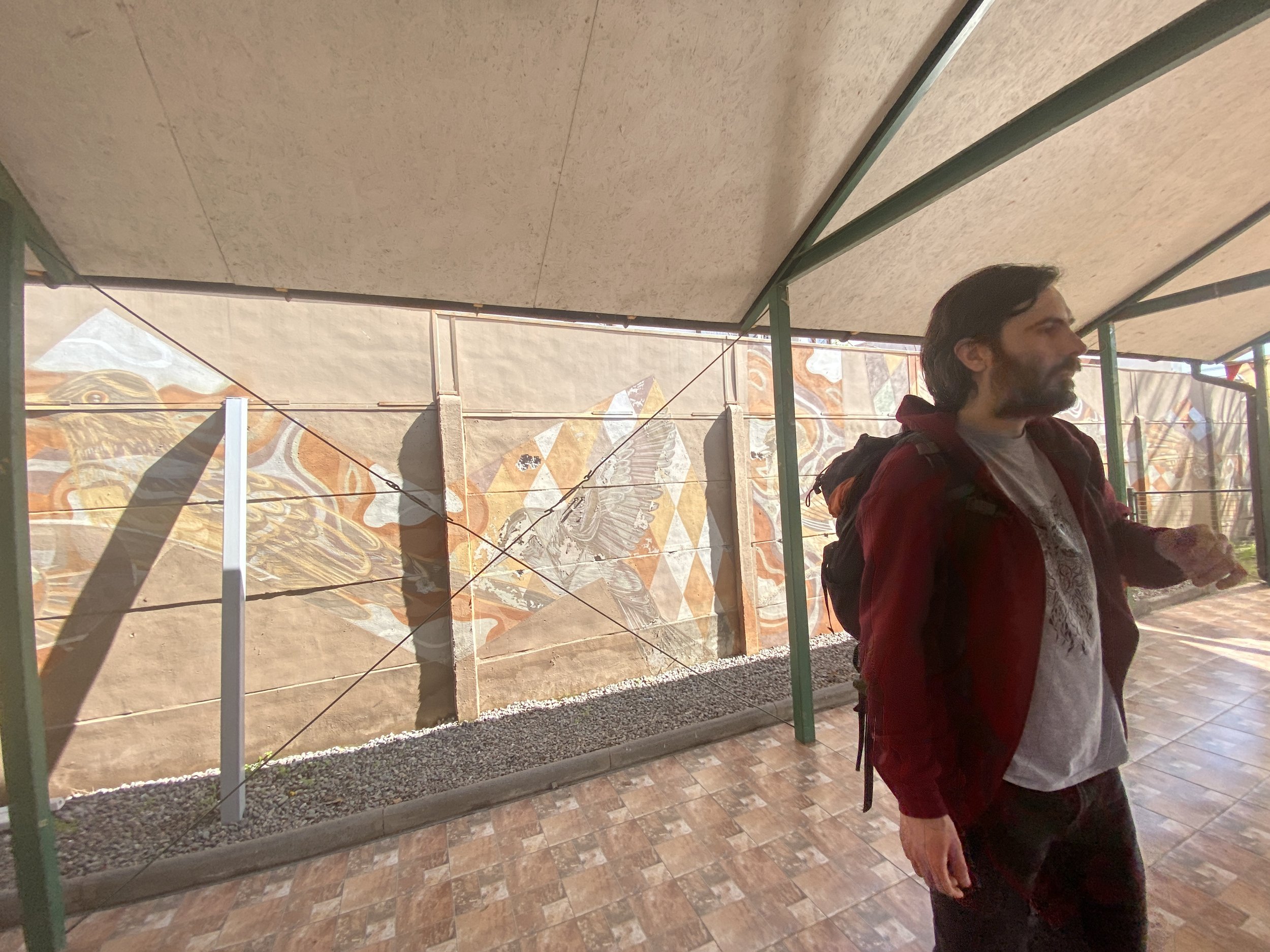ARTIST SERIES: Clay Muralist Marco Ripetti
Sometimes the most memorable experiences have the most unassuming beginnings. This was the case with Marco Ripetti. Unlike many of the artists I’d met with in Chile, I didn’t find Marco from google searches or through word of mouth. I found him on a PDF (yellow pages of the 21st century). Maya Errazuiz from Fundación Mar Adentro had kindly shared this list of environmental artists and art collectives in Chile, and it was like handing me the keys to the kingdom.
After seeing Marco’s murals painted with different clay and earth pigments on Instagram, I reached out. A few days later, we met in Macul to see some of his murals. This was the first meeting that really challenged my Spanish skills (or lack thereof), but between the two of us speaking Spanglish, we managed with only a few hiccups.
Along the way, Marco explained the history of the area and how developers were trying to build “edificios” or skyscrapers in a middle class residential neighborhood. The community had protested, and then Marco led a community mural project celebrating the area’s biodiversity and history.
As we walked to see his other murals (the one to the right made exclusively with natural pigments), we talked about Marco’s current projects and about how he became a muralist in the first place. Growing up, Marco had always enjoyed painting, but he didn’t study art in university. He studied journalism. In fact, Marco didn’t actually pick up a paintbrush again until his final year. It was through a school assignment that he rediscovered his passion for painting, and since then, he’s been making murals for nearly 10 years.
Marco and Leyla’s process creating the Macul community center mural
A few days later, Marco invited me to see his mural at the La Feria Cultural Center. Before reaching the mural, we stopped to look at a grid with different colored pigments. Some were quite worn and peeling, while others were intact. This was where Marco had tested different binding agents before starting his actual mural. “Each wall is different,” Marco explained, “So the binding agent and ratio also needs to change.” He pointed to one of the test squares where the pigment had mostly worn off. “This was done with flour. It doesn’t hold up very well.” Other options that he has tried are egg whites, cactus (called tuna) juice and acrylic binder. The acrylic binder is probably the easiest because it’s already prepared, but he’d rather not use it if he can avoid it.
Then we headed to see the actual mural which was done in collaboration with Marco’s friend and mosaic artist, @colectivo_musa. Sure enough, some areas of the mural, which was painted in January 2022, have held up better than others. This is mostly because in some areas, the rain is directly funneled into the wall which has caused the wall to crack and lose its pigment more quickly.
Inside the La Feria cultural center, Marco spread out his collection of clay and rock sediments that he’s collected from around Chile. Some come from Atacama, the northernmost region of Chile, while others are from Aysén, Coquimbo or even Santiago. He showed me how to mix the pigments and explained that they work best once the sediments mixed with water have set for a day. “Add the binder the day that you want to paint or else it will basically turn to concrete,” he explained. Since we didn’t have a day to wait, I tried the pigments as they were. It was wonderful watching the colors and textures change once we added water, as some became quite smooth while others were still grainy and, therefore, difficult to paint with. I was even more surprised by how differently the pigments worked on wood, brick and paper surfaces (Yes, he even let me paint my own mini-mural!).
While at the cultural center, Marco also introduced me to his friend, Alsino (@garua.taller), who weaves animal sculptures and baskets out of willow and bamboo stalks. He’s even made a giant human that several people wear together on a parade float during the Carnaval por Víctor Jara y Littre Quiroga (photos below). Alsino is currently weaving giant animal heads that people can wear and use as educational tools about protecting the environment.
Around 5pm, we took the train back downtown. Until that point, I’d mostly been meeting with artists on Zoom or in restaurants. Marco spent the whole day with me. It was so exciting to not only learn about his process and methodology, but to also experience it firsthand. His experimental approach to making the pigments has changed the way that I think about paints and about art in general. For me, being a good artist used to mean “mastering” a skill. Now I see that the process of discovery and exploration are just as much, if not more, important.
If you’d asked me a month ago what types of artists I was planning on meeting in Chile, a clay muralist wouldn’t have been on the list. In fact, I didn’t even know that muralists like Marco existed. After meeting with Marco, though, I don’t want to buy acrylic paints ever again. There’s a whole world of natural pigments to explore, so it’s time to let the experimentation process begin!
Muchas gracias Marco y Alsino! Thank you for showing me ways to make beautiful paintings and sculptures with minimal negative impacts on the environment.
































